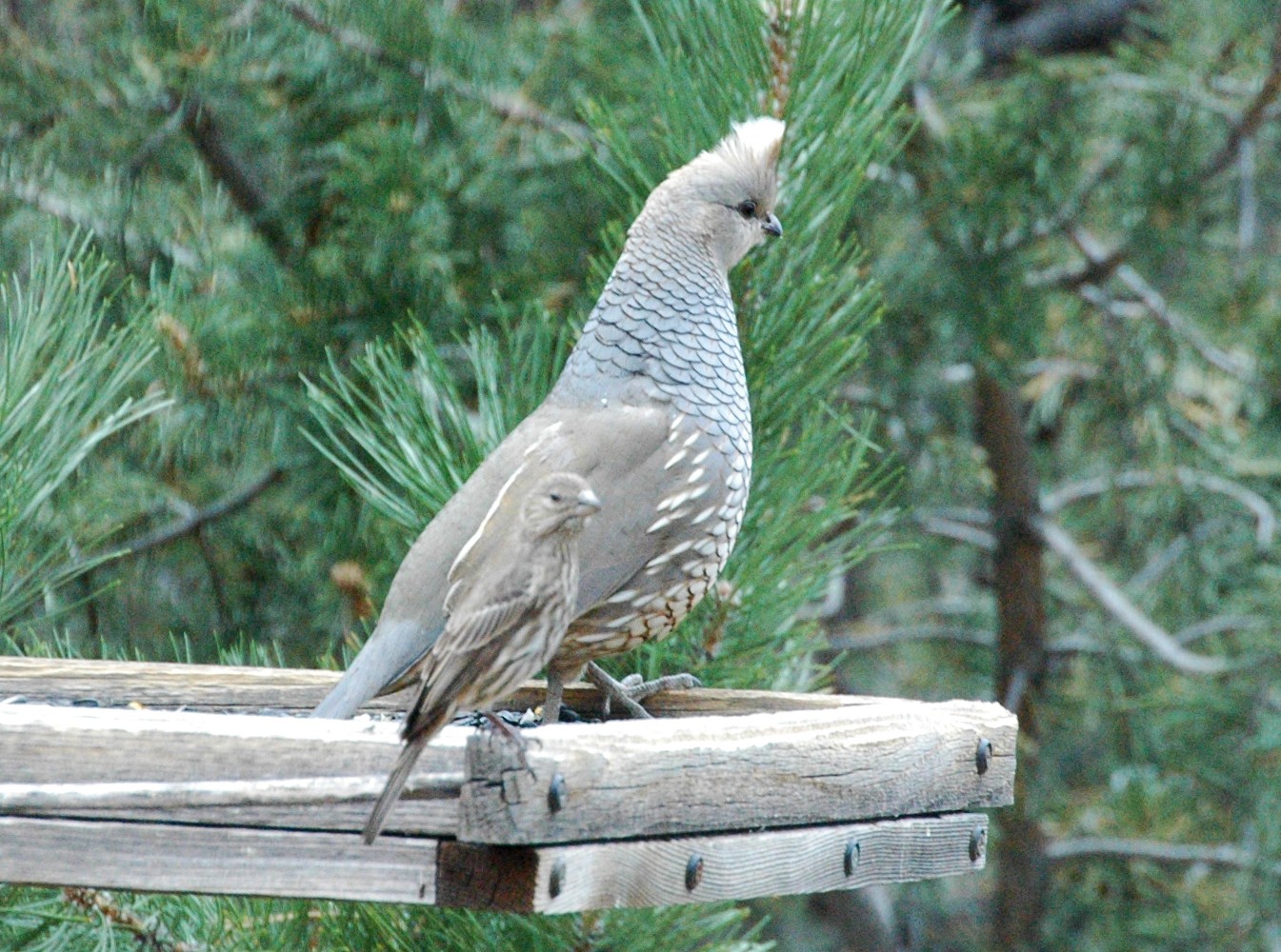Scaled Quail
A species of Crested quails Scientific name : Callipepla squamata Genus : Crested quails
Scaled Quail, A species of Crested quails
Botanical name: Callipepla squamata
Genus: Crested quails
Content
Description People often ask General Info
 Photo By Bryan Ungard , used under CC-BY-SA-2.0 /Cropped and compressed from original
Photo By Bryan Ungard , used under CC-BY-SA-2.0 /Cropped and compressed from original Description
The scaled quail (Callipepla squamata), also commonly called blue quail or cottontop, is a species of the New World quail family. It is a bluish gray bird found in the arid regions of the Southwestern United States to Central Mexico. This species is an early offshoot of the genus Callipepla, diverging in the Pliocene. This bird is named for the scaly appearance of its breast and back feathers. Along with its scaly markings, the bird is easily identified by its white crest that resembles a tuft of cotton. The nest is typically a grass-lined hollow containing 9–16 speckled eggs. When disturbed, it prefers to run rather than fly. Widespread and common throughout its range, the scaled quail is evaluated as Least Concern on the IUCN Red List of Threatened Species. 
Size
25-30 cm (10-12 in)
Colors
Brown
Gray
Nest Placement
Ground
Clutch Size
7 - 14 eggs
Incubation Period
1 - 2 broods
Number of Broods
22 - 23 days
Feeding Habits
Scaled Quail feed predominantly on a variety of seeds from forbs, shrubs, and certain trees. Their diet also includes leaves, fruits, and insects such as grasshoppers and beetles. These birds forage on the ground in groups, typically during dawn and dusk. They integrate agricultural grains when available, complementing their diet seasonally with high protein from insects.
Habitat
Scaled Quail primarily inhabit arid desert grasslands, shrublands, and occasionally pinion-juniper woodlands. Favoring open terrains, including plains, rolling hills, and low ridges, they adapt well to environments combining low grasses and shrubs with sparsely distributed agricultural areas. These birds thrive in spaces with limited dense shrub growth, often near human structures for nesting and shelter.
Nest Behavior
Both scaled Quail parents participate in the construction of the nest. Following construction, the female lays eggs, and both parents are involved in the care of the eggs and resulting offspring.
Nest Characteristics
Scaled Quail build their nests on the ground within dense and low vegetation, like cacti, yucca, shrubs, or small trees. These shallow nests, made of grass and leaves, typically measure 9 inches across and 3 inches deep.
Dite type
Granivorous
People often ask
General Info
Feeding Habits
Bird food type
Bird Feeder Type

Platform
Behavior
Scaled Quail exhibit distinct behaviors, particularly during their breeding season starting in April. Males perform a conspicuous courtship known as 'tidbitting,' combining ground pecking, feather erection, head bobbing, and high-stepped prancing to attract females. These birds form monogamous pairs, with males being territorial during this period. Post-breeding, scaled Quail socially congregate into coveys of 15–40, merging several family units. Initial reactions to threats involve fleeing on foot and they exhibit unique communal roosting by sleeping in outward-facing circular formations for vigilance.
Distribution Area
Scaled quail occur from south-central Arizona, northern New Mexico, east-central Colorado, and southwestern Kansas south through western Oklahoma and western and central Texas into Mexico to northeastern Jalisco, Guanajuato, Queretaro, Hidalgo, and western Tamaulipas. It has been introduced to Cuba, Jamaica, Haiti, Dominican Republic, Puerto Rico and to the United States in Hawaii, central Washington, eastern Nevada, and Nebraska, but is only considered established in central Washington and eastern Nevada. Scaled quail has formed several subspecies, 3 of which range into the USA: Callipepla squamata squamata Vigors, 1830 (Altiplano scaled quail). The nominate subspecies; it is only found on the Central Plateau (altiplano) of Mexico. Callipepla squamata pallida Brewster, 1881 (northern scaled quail). The most common subspecies, it occurs from Arizona and New Mexico to Colorado and just into Oklahoma, and western Texas, northern Chihuahua, and Sonora. It is paler than the nominate subspecies. Callipepla squamata hargravei Rea, 1973 (Upper Sonoran scaled quail). A form of arid habitat, it is only found in the area where the states of Colorado, Kansas and Oklahoma meet, and in northwestern New Mexico. It is the palest subspecies, adapted to dry and sandy habitat. Callipepla squamata castanogastris Brewster, 1883 (chestnut-bellied scaled quail). Found in southern Texas from Eagle Pass and San Antonio south to adjacent northwestern Mexico (Coahuila, Nuevo León, and Tamaulipas). Similar individuals are sometimes found in the extreme northeast and west of the species' range. The chestnut brown belly distinguishes it from all other subspecies; it is also darker than the other two found in the USA. 
Species Status
Not globally threatened.